Let's be clear, the most expensive headphones aren't necessary for binaural beats. In fact, most headphones will work just fine.
We recommend closed-back headphones as a preference, and over-ear types tend to have a sound advantage due to bigger drivers.
But there are great options at every budget, which we'll explore in this article:
Please note: This post is quite long and, although we try to keep the techno-babble to a minimum, perhaps you are eager to jump in and get a fantastic pair of headphones that will do the job perfectly, without having to read the ‘what' and ‘why'.
If that's the case, simply scroll down to the ‘Top 10 Recommendations' section.
But if you want to learn a thing or two about headphones, saddle up for a 5-minute read.
Content:
- Quick reference
- Bass enhancement
- Comfortability
- Closed vs open back
- Frequency response
- Impedance
- Top ten
- Summary
Headphones in a Nutshell
Headphones have come a long way in the last 20 years, and even the standard earbuds that come with a good smartphone can be of decent quality.
The word quality, however, is somewhat ambiguous when it comes to headphones.
Indeed, within the mid price range (which we will look at in our recommendations) it is largely down to preference, and the majority of people can't notice too much of a difference between certain types of headphones.
We also need to consider that different headphones are intended for different people and different uses. This is the reason why there are so many different types of headphones on the market.
Like most things in life, headphones tend to be a journey: we start with a basic, fairly cheap pair of headphones, and as our love for music grows and it becomes more stable part of our lives, we tend to upgrade our headphones and learn more about what makes for a good listening experience.
The fact is, you can listen to binaural beats on pretty much any pair of headphones, and many people do.
The large majority of headphones, indeed I would go as far as to say nearly all headphones on the market, have the capability of fully facilitating the ‘frequency following response' that is required for binaural beats to be effective.
But most of us who enjoy this genre of music, and indeed ambient/meditation music in general, want to invest in a pair of headphones that will produce an optimal listening experience for brainwave entrainment.
We want a pair of headphones that will provide a good quality of sound, feel very comfortable for long periods of listening, and produce the desired effects.
Generally, such headphones can be found in ranges provided by the following brands:
However, to really understand what is going on inside a pair of headphones and know whether they are well-suited to this purpose, there are some feature considerations we need to explore.
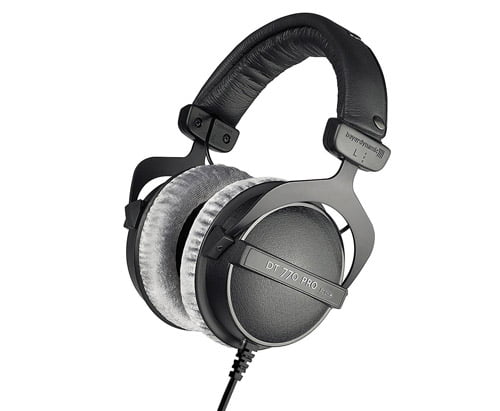
Beyer DT-7700: One of our recommended headphones used in our studio for referencing our music. See them here.
Consideration 1: Enhancement (bass boost, EQ, colored sound)
The first thing to consider is that you don't want headphones that overly enhance the sound, such as those that boost bass or exaggerate the midrange and top-end of the music to produce a “better sound”.
Without getting too technical, what we want to achieve is a neutral sound, not a “colored sound”.
By colored sound, we mean a sound that is interfered with in some way and not true to the original recording.
All our music is designed to be listened to exactly how it is made.
In addition to the binaural beats frequencies that we use, we also tune the instrumentation in the music to specific frequencies that complement the binaural frequencies and create an overall harmonious sound.
If you have ever listened to a binaural beats track, or a guided meditation or any other form of brainwave entrainment music, and felt that the composition felt awkward, as if it didn't gel well together, this is because the track contains what we call dissonance, which is a lack of harmony among musical notes.
This makes for an unpleasant listening experience.
You shouldn't need to interfere with the sound for a track to be pleasing to the ear.
Of course, if you are listening to dance music, you may want to boost the bass a bit to give you a heavier vibe, as if you were in a club.
But the general rule is that a good pair of headphones should deliver the music as it was designed to be heard.
But hold on a second. Because there is a caveat to this. And it is one of the most overlooked things in most headphones review articles on the web:
It doesn't matter how good the headphones are, if the source of the music is of poor quality then the listening experience is always going to be compromised.
This is where bass boost and EQ can come in handy, because you can polish the sound and try to make it sound better.
If you are listening to a low-quality MP3 file through a device such as a phone, the quality of the music is already considerably diminished compared with the original studio mix.
So we must always consider that it may not be the case that someone “needs better headphones”; they may just need a better source of music.
The point is that where binaural beats music is concerned, the less headphones interfere with the original sound, the better.
Where headphones with bass boost and EQ settings are concerned, there is usually an option to turn these things off. We recommend that you do that when listening to brainwave entrainment music.
If at this point you are wondering about noise cancelling headphones, such as the Bose Quiet Comfort Series, and whether these are good for listening to binaural beats, the answer is yes.
Noise cancelling headphones are generally not a problem, at least not the more recent models, which have refined the technology very efficiently.
Contrary to popular belief, the noise cancelling headphones do not cancel out frequencies that you are listening to, but instead cancel out frequencies that are invading your listening space from the external environment.
More on wireless headphones a bit later on in the specifications section.
Consideration 2 – Comfortability (headband, ear cups, wire)
The majority of brainwave entrainment/meditation music is long play. Some products come with versions that are 2 hours long, and a minimum of 30-minutes in duration.
Depending on the track you are listening to, you may be focusing intently, meditating, or engaged in a task for a long period of time. For these purposes, you will want to have a pair of headphones that are very comfortable.
The best headphones in this regard will be over-the-ear headphones, with a very comfortable headband.
For this type of music specifically, the best type of headphones are closed-back headphones that offer minimal sound leakage and sound disturbance.
These headphones tend to be over-the-ear headphones. That said, there are some noise isolating in ear (ear buds) that offer very good sound.
We will discuss the difference between closed-back and open-back below.
So you will want to choose a pair of headphones that are well padded in the headband area, and in the ear cup area.
You will also want to consider the wire that leads from the headphones to the input of your device, be that a a mobile device, computer, or other audio system.
It is best to go for a single wired pair of headphones, as the double wires tend to get caught up together or tangle around the chin or chest area, and can just be annoying, full stop.
Ideally the lead should be fairly thick too, as these tend to tangle less and are generally more versatile and durable. They will last longer.
Closed-Back vs. Open-Back Headphones
Closed back headphones are recommended for meditation-style music because they isolate you from external noise.
Generally the goal of this type of music is focus, relaxation and introspection.
Closed headphones are therefore an excellent choice for noisy environments because they are able to block out around 10-15 dB of sound.
There are two types of closed headphones you can purchase: either full-size (circumaural), or on-ear/earpad (supra-aural).
The difference is that the circumaural type is bigger and more suited to indoors, whereas the supra-aural type is better-suited for being out and about.
In general, you will find that most audio professionals (DJs, sound reinforcement, location recordists, studio producers, etc.) use closed headphones, as these provide better concentration without the intrusion of ambient noise distractions.
Understanding Frequency Response
The frequency response numbers you see on headphone specification lists is the quantitative measure of the output.
The low number represents the lowest boundary of your headphones frequency range, and the high number represents the highest boundary of your headphones frequency range.
The human auditory system is sensitive to frequencies from about 20 Hz to 20 kHz, so a professional pair of headphones will cover that as a minimum range.
Some people make the point: “why do some headphones have a lower frequency response and a higher frequency response than humans are able to hear?”
Well, the answer is actually threefold:
1. Not all of us have exactly the same level of hearing. Some people can hear up to 22,000 Hz, though the upper end limit of your hearing tends to reduce as you age.
And some people may hear down to 18,000 Hz. Some people generally have better hearing than others, or are more sensitive to specific frequencies than others.
2. Just because you can't hear something does not mean you can't feel it. For example, those who like to hear bass and low frequencies within the music they listen to, will choose headphones that go below that 20 Hz threshold, because they want to feel more of a vibration when they are listening. Better lower frequency response also gives a warmer sound.
3. Some of the better brands of headphones are produced with a broader frequency range to allow more depth across the spectrum, with the idea being that no matter what music you are listening to the headphones will never be pushed to their frequency limits and therefore you will experience less distortion or coloring of the sound.
Lastly, consider that if we were to put a filter on our ears that limited our hearing to 20 Hz – 20 Khz, we would probably find that we experienced the world very differently. We would be shaving off any frequencies below and above those points, and even the slightest frequency picked up outside of those areas would change our perception of sound.
As long as your headphones state the frequency response to be 20 Hz-20 Khz, they'll be just fine for listening to binaural beats.
However, if you want to go for a pair of headphones that have a broader frequency response, then by all means do so. In terms of sound perception, you will probably be pleased that you did.
Understanding OHM (Impedance)
You may have heard that high impedance headphones are better quality. There is a truth to this, but getting the most out of high impedance headphones depends on the equipment that you are using.
High-impedance headphones use a much thinner voice coil in their drivers, which is wound with less air between the individual wires, resulting in less sound distortion and a better level of bass reproduction.
However, high-impedance headphones require more power to effectively drive the sound, so plugging a pair of very high impedance headphones into your iPhone will result in a low volume and you won't be able to take advantage of the impedance anyway.
Very high impedance headphones will require an external amp to drive the sound and give you what may be quite subtle benefits, so don't get too hung up on this metric when shopping for your headphones.
You can pretty much guarantee that most headphones over $100 will have a decent OHM level anyway.
All the recommendations in our list are over 25 OHM, and most of them are above 35, which is fine for listening on a hi-fi system through your phone/tablet, or MP3 player.
Our Top 10 Headphone Recommendations
Phew! So before we get into the recommendations, let's just quickly re-cap on what the requirements should be when choosing headphones for binaural beats:
- No bass or EQ enhancement (or at least turn it off)
- Comfortable headband and ear cups
- Single wired
- Closed back
- Frequency response 20 hz – 20 khz (better than that is great)
- 25-35 OHM (don't go above 80 if you plan on using a phone, tablet or mp3 player)
I want you to bear this list of 6 things in mind because you don't have to buy one of our specific recommendations.
You can buy something a friend has recommended, or something you like the look of, as long as it ticks these six boxes.
It may be the case that you have had experience of a particular brand and you want to remain loyal to that brand, or that you like a particular color or size of headphone.
So let me just say at this point, if you pick a reputable brand of closed-back headphones – such as any of the following – you will not go wrong:
Bear in mind that most companies do a budget range, particularly Sony (out of the list above). For a good pair of headphones, that ticks all of the requirements and offers a very good listening experience, you are probably looking at $100+.
That said, many brands reduce older models when they bring out a new version, so always look out for those bargains.
1. Beyer DT770 Pro (approx $150)

The Beyer DT770 Pro are the headphones we currently use in our studio for monitoring and reference purposes.
If you want to hear music how it was supposed to be heard, neutrally and without a colored sound, these are extremely good. If you are an audiophile and love to hear all the different aspects of a composition, then you will love these.
Beyer offers three different versions, each of a different impedance. They start at 35 OHM for use with mobile devices and audio equipment, and then jump to 80 OHM for those using the headphones with studio equipment.
The only downside to these headphones is they are really for use at home. The ear cups are large and the weight is moderate, so not ideal for walking around the street or listening to on the train. That said, if you want to block out the world, these are pretty good at doing just that.
=> Click here to view the Beyer DT770
2. Sony MDR V7506 (approx $120)
A close second are the Sony MDR-V7506 Studio Monitor Headphones. These Sony headphones are found in studios all over the world, and often used by broadcasters.
Like the Beyer, you won't go wrong with these headphones; they have been an industry standard for many many years.
They have a good bass response and all-round nice expansion on the top end.
One advantage over the DT770 is that they are foldable and slightly lighter. However, they are noise isolating headphones and therefore meant mainly meant to be used indoors or in isolated places.
=> Click here to view the MDR V7506
3. Beyer DT 1350 (approx $185)
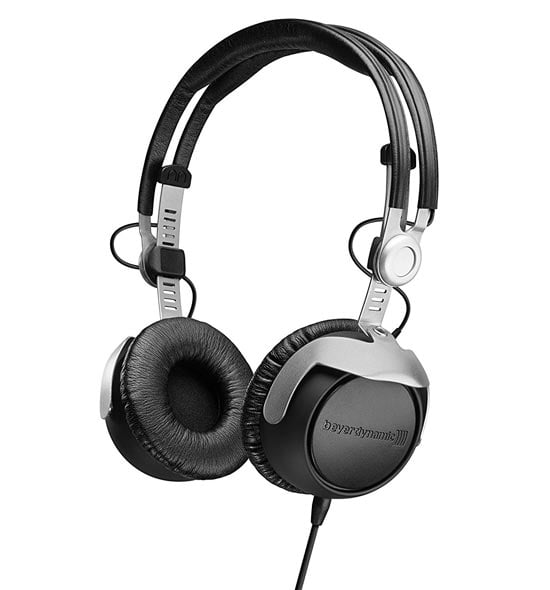
A slightly more expensive alternative to the DT770, these Beyer are great for on the go listening because they are supraural in design – making them lighter.
The compact on-ear construction contributes to a good isolation of external noise, and the fact they are made in Germany is testament to the build quality.
If you want something with similar quality to the DT 770 and Sony MDR but more portable (for travel), then these are very good option.
They also come in gold!
=> Click here to view the DT 1350
4. Shure SRH 840 (approx $200)
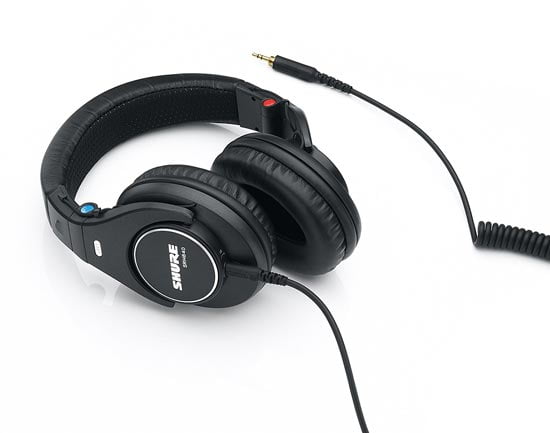
Shure has a number of models in the SRH range, many of which go above $400.
My issue with many of the top models in this range is that they have a dual wire, one wire coming from each earphone.
The 840s are single wired and in terms of performance more than adequate for a superb binaural beats/meditation music listening experience.
SRH utilizes 40 mm drivers for an expansive soundstage, with a frequency range of 5 – 25,000 Hz, so plenty of expansion space on the low-end and more than adequate top end space, though not as expensive as the Beyer or Sony.
They have a circumaural collapsible design, and a coiled cable, which some people may prefer as it keeps the cable neat and tidy and prevents it getting caught on things.
=> Click here to view the Shure 840
5. Audio-Technica ATH-M70x (approx $299)
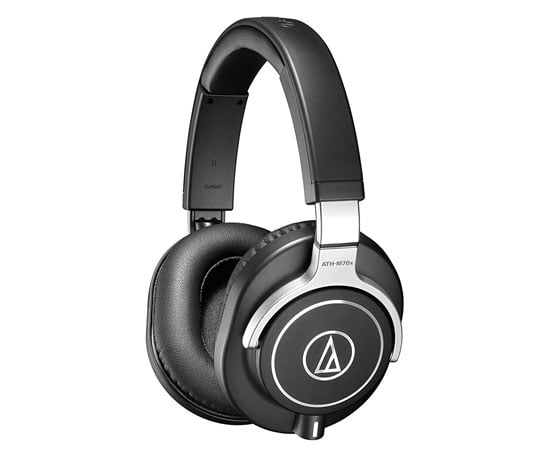
I have to say this is a very attractive pair of headphones, and I'm tempted to buy some when the budget permits.
They have a frequency response of 5 – 40 kHz, which is very wide and means they will accurately reproduce extreme low and high frequencies. The OHM comes in at 35, which is good for professional and personal use, though I do like my 80 OHM Beyer for studio monitoring purposes.
That said these Audio Technica are better placed for listening to on the go, not least because the ear pads can swivel 90° so that you can take one earphone off if need be. The circumaural design looks super comfortable.
If you like the sound of these but don't want to pay the price tag, have a look at the M50x instead. They are also highly rated but not as expensive, though I think the M70x look much better. That said, I almost feel like you're paying a little premium here for the styling.
=> Click to view the Audio Technica
6. AKG K550 MKII (approx $150)
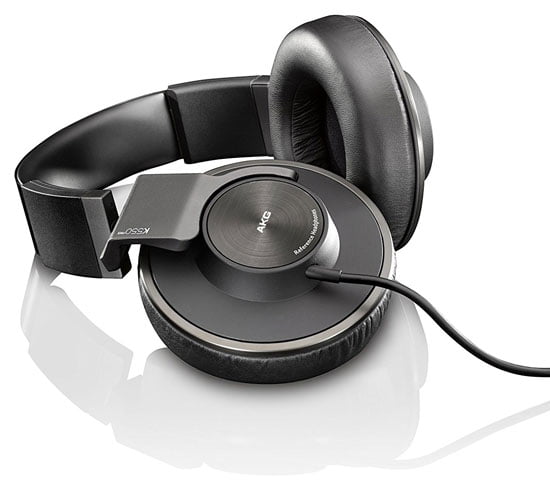
These headphones actually won Best Over Ear Headphones in the What HIFI awards in 2016.
Like the Audio Technica ATH M70x a design is really slick and appealing. Better still, these fold up nicely for trips on airplanes, trains etc.
The AKG K 550 MKIIs deliver excellent sound quality due to a 50mm driver, the largest AKG offers in its headphone line.
Specification wise, the frequency response range is 12 Hz – 28 Khz, and they come in 32 OHM.
All the headphones in this list around the $200 mark will sound very good, and largely will come down to personal preference in terms of how the bottom end, mids and are interpreted, and how neutral and balanced the overall sound source is.
I think a large part of the buying decision is going to come down to portability and the way the headphones look.
These AKGs certainly look very modern in comparison to my DT 770s, but the overall spec is lower.
7. Sennheiser HD 280 Pro MK2 (approx $99)
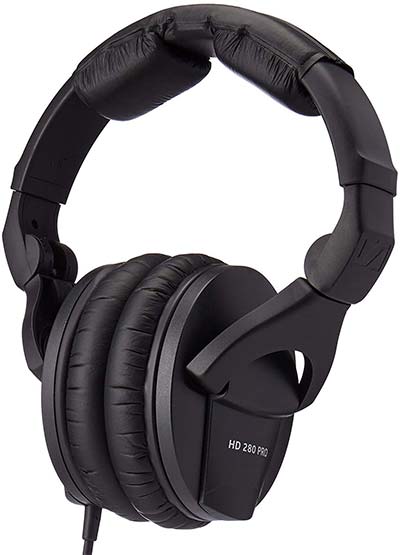
Sennheiser is a brand that has become synonymous with good quality, reliable headphones over decades.
When people ask me what headphones they should get, I often say that you can't go wrong with Sennheiser. And the 280s personify that statement.
The 280 MK2's have a great frequency range response and are specifically designed with a solid closed-back structure for listening to ambient music.
As you'll see from the reviews on Amazon, these are a very popular choice and very reasonably priced for the specification.
If you if you have a little bit more budget, check out the 300 Pro HD for a professional studio grade.
=> Click to view Sennheiser 280
8. Sennheiser HD-25 (approx $150)
I also own a pair of these (though not this upgraded version), so I thought I should include them here. I have the original version, which I've had for over 18 years. That should tell you something about the quality of Sennheiser.
These were designed as DJ headphones, but they meet all the specifications for listening to binaural beats, and like the DT 1350 they are lightweight and durable.
The listening experience is not going to be as isolated as with my top two recommendations, but that's not necessarily a bad thing because some people feel a bit claustrophobic with really big ear pads that completely block out external sound.
The bottom line is that the HD-25s are a well-built pair of headphones with good sound quality across a broad frequency range. Moreover, if you like to do a spot of DJ'ing, these are built with that purpose in mind.
=> Click here to view the HD-25s
9. Bose QuietComfort 35 (approx $200) – wireless
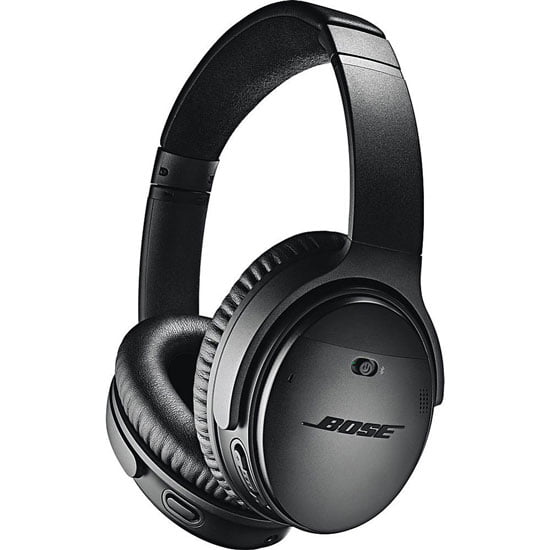
I have also owned Bose headphones in the past and been very impressed with the sound quality, but that's not the only reason I am including them in the list.
We have many customers using the Quiet Comfort series headphones and have had very good feedback on them. This feedback correlates with studies done on the 35s that say they are the best noise cancelling headphones.
And as previously discussed, the noise cancelling will not affect the frequencies in the binaural beats. These headphones are very expensive, but they are wireless and they also interact with your phone and virtual assistance on your devices.
For me personally, I don't have a use for a pair of headphones like this. The majority of the listening I do is in the studio when making music and when listening to old LPs and CDs on my hi-fi system.
However, I appreciate that some people want wireless headphones and want the flexibility of a pair of headphones to work well across all their devices, and certainly the Bose cover all those bases.
Note that there is now a newer model in the range, the 700, but they are designed with Amazon Alexa voice control and targeted to those who use that service. The good news is that the 35's have come down over a third in price!
=> Click here to view the Bose Quiet Comfort Series
10. Earbuds (in-ear)
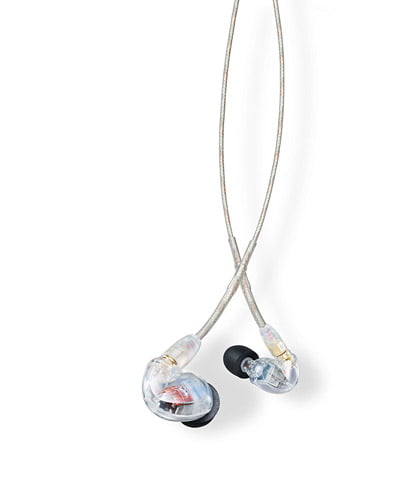
You may not be convinced that earbuds provided with iPhones provide good sound quality, but they will work with binaural beats.
The specifications indicate a frequency response somewhere in the range of 20 Hz to 24 kHz, which beats general expectations from consumer electronics at any level.
However, the components are generally not going to be as good as the recommendations in our list: the drivers are smaller, the OHM is lower, the components cheaper, etc.
That being said, most people these days choose to have some over/on-ear headphones for home use and earbuds for use on the go.
If you prefer earbuds and you are someone who doesn't generally notice the difference between headphones, then stick with your iPhone or Samsung or other earbuds – they can do the job.
If you do want to go for a higher quality pair of earbuds, then I recommend checking out the Shure SE range and the Etymotic Research range. Both are noise isolating, get good reviews and will be better than your standard phone earbuds.
In Summary
As mentioned previously, when choosing your headphones, look at the list of 6 specifications for listening to binaural beats.
This list will apply to all forms of ambient music where you want an “in head experience”. By that I mean headphones that block out the distraction of external sounds and help you lose yourself in the music.
A lot of the articles I read online seem to be pushing people to buy the most expensive headphones, but as you can see from our recommendations, $150 will get you a really good pair of headphones that will last a long time, be a pleasure to listen to, and deliver a good brainwave entrainment experience.
I hope this post has helped you learn something about how headphones work, and that you'll now understand what a few of those terms detailed in the specifications list mean when you're checking them out online.
If you have a pair of headphones in mind and want our opinion, you can always drop us an email and we'll do our best to help.

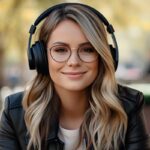
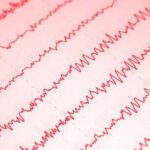

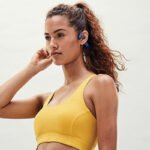





why single wired?
They don’t have to be but some people may find it preferable because the single wire is less invasive.
I was wondering if there is a specific way you need to wear your headphones like with hemi sync it tells you ” you should be hearing my voice in your right ear” and if not to turn them around.
That’s probably just referring to having the left and right headphones on the correct ears. On your headphones you will see L & R signs that relate to the left and right ears.
Thanks for the information. I’ve been doing research on a lot of different binaural frequencies, and I frequently see videos that claim 5-7hz or lower. However, none of the headphones I’ve viewed, nor speakers in general, play that low. Therefore, I’m seeking understanding. My question is two-fold:
1) When I check out these videos which claim they emit those low frequencies, I hear them. Everyone one of the videos. As does anyone else I’ve showed them to. How is this possible, unless they frequencies that are advertised aren’t really 5-7hz?
2) If no headphones play that low, doesn’t it kind of defeat the purpose in having tracks that are created that utilize those frequencies?
Thank you for your time.
Hi Mike,
The frequency response of the headphones doesn’t need to go down to those low frequencies. Indeed, humans can’t hear that low. The low frequency of 5-7 Hz represents the frequency the brain interprets and follows along to (produces brainwaves at), which is the mathematical difference between the two frequencies sent to the left and right ears.
For example: if you hear 210 Hz sent to the left ear, and 205 Hz sent to the right ear, your brain interprets a third frequency (a phantom frequency), which is 5 Hz, the mathematical difference between the two. This is how binaural beats work. It’s an auditory trick of sorts.
We’ve written about this subject in greater detail here: https://www.binauralbeatsmeditation.com/human-hearing-binaural-beats/
wow..thanks James..really appreciate this, I’m not tech inclined and just want quality for binaural and rife frequencies..old school corded and not fazed by portability or looks lol..but like another person here, I refuse to buy anything from amazon and will buy elsewhere, its worth paying more to not fund certain businesses❤🇦🇺🙏
Great, great article!!! Thank you.
Do you think any of these two phones can play Binaural sounds too?
https://en-us.sennheiser.com/hd-350-bt
https://en-us.sennheiser.com/hd-450-bt
Yes, these headphones will be fine.
Can I use the audios you sell on a regular smartphone (with an appropriate headphone)?
Or the smartphone soundboard is not adequate for the job? Should I always use a notebook? Or even better: a notebook with an external soundboard?
Yes you can. We provide downloadable files, so you don’t need to stream which would be lower quality. You can download the files and share them among all your devices.
You only give information on Amazon as places to buy the headphones you recommend. I will not buy from Amazon. Where do you buy these headphones. Why are you only promoting Amazon
Hi Judy, all the models are available there and people from different countries can order from the store. Moreover, the sellers are usually the brands themselves selling through Amazon, and it’s generally competitively priced too. However, you can choose to view the model on Amazon and then enquire in your local area store. We love to support local businesses too.
Hi James, Is there any way or test to check whether the Headphones/Earphones are producing the binaural beats properly?
Yes, if you have a raw tone it is easy to test. Please use the test tone and instructions on this page: https://www.binauralbeatsmeditation.com/the-science/
Is there a headphone for 1hz, do you need them? Also, is there a headphone for 1hz to 100hz? What would you recommend for this?
Hi Cindy, no, you can just use normal headphones. The frequency response of normal headphones is fine for this type of music.
I am hearing impaired and I wear hearing aids. What do I need to do to get this experience? Headphones that go over my ears with hearing aids in, or hearing aids out and headphones that can increase the sound level, or what?
Hi Karen, impaired hearing isn’t an issue since you will still benefit from the vibration of the frequencies. You can still use your hearing aids if you like, to amplify the sound.
hi! I know I’m a few years late to this article, I have the bose qc ii and use it frequently for binaural, do you think I’m losing a lot of frequency? I bought it because I get migraines from wearing over the head headphones so if the answer is yes I need to hunt for a shearling padded headphones or something?😅 thanks so much!
Hi Mai, the Bose QC II are fine for listening. These are really good headphones.
thank you so much! and thank you so much for this in depth guide to binaural and headphones. after I read this I went to the bose app app on my phone to loom at the EQ feature to make sure the bass was turned off, should it be right at 0,it gives me the option to turn it all the way down to -0, as well ad with the treble and the mid? how should I adjust them?
No worries. Yes, keep the bass at the default setting; no need to add bass or take any away. The same with the other EQ settings. It’s best just to leave them off.
What about bone conduction head phones? I know they don’t exclude surrounding sounds, but I generally will be using in a quiet location while meditating and want to use outdoors while running. Can you recommend a good set?
Hi Connie,
Bone conduction headphones can work because they send sound vibrations through your skull bones to your inner ear.
Have a look here at Shokz. The Shokz OpenRun is widely praised for sound quality. It’s also lightweight and water-resistant, making it ideal for both meditation and outdoor activities.
I hope this helps!